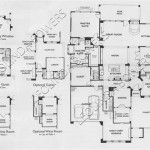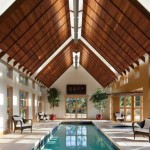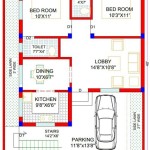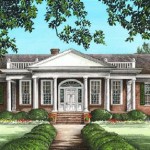Queen Anne Victorian House Plans: A Journey into Architectural Extravagance
Queen Anne Victorian house plans epitomize the architectural extravagance of the 19th century. These opulent dwellings, characterized by their intricate ornamentation and asymmetrical facades, have captivated homeowners with their timeless charm and grandeur. Whether you're an architect, historian, or simply an admirer of Victorian architecture, this article will delve into the captivating world of Queen Anne Victorian house plans, exploring their origins, characteristics, and enduring legacy.
Origins and Historical Context
The Queen Anne Victorian style emerged in England during the reign of Queen Anne in the early 18th century. However, it was not until the mid-19th century that the style gained widespread popularity in the United States. The American interpretation of Queen Anne architecture blended elements of Gothic Revival and Second Empire styles, resulting in a uniquely eclectic and extravagant aesthetic.
Architectural Characteristics
Queen Anne Victorian house plans are renowned for their asymmetrical facades, featuring multiple gables, towers, turrets, and porches. These elements create a sense of visual complexity and drama, making each home a unique work of art. Other characteristic features include:
- Steeply pitched roofs with elaborate gables
- Bay windows with intricate trim
- Ornate vergeboards and cornices
- Stained glass and leaded glass windows
- Asymmetrical chimneys and decorative railings
Interior Design
The interiors of Queen Anne Victorian houses are equally opulent and reflect the era's emphasis on comfort and luxury. Floor plans typically feature spacious rooms with high ceilings, elaborate moldings, and decorative fireplaces. Parlors and dining rooms are often separated by pocket doors, providing both privacy and a sense of grandeur.
Ornamental elements such as stained glass transoms, hand-painted murals, and intricate woodwork adorn the walls and ceilings. Large windows allow for ample natural light, creating a bright and airy atmosphere.
Modern Adaptations
While Queen Anne Victorian house plans remain highly prized by enthusiasts, modern adaptations have emerged to meet the needs of contemporary homeowners. These adaptations often retain the key architectural features but incorporate updates such as energy-efficient windows, modern appliances, and open floor plans.
By blending traditional aesthetics with modern conveniences, architects and designers are creating Queen Anne Victorian houses that are both timeless and comfortable. These updated plans cater to homeowners who appreciate the historical charm and architectural significance of Victorian architecture while seeking a home that meets their modern lifestyle.
Legacy and Influence
Queen Anne Victorian house plans have had a lasting impact on American architecture. Their intricate ornamentation and exuberant scale influenced the development of subsequent architectural styles, including Shingle Style, Colonial Revival, and Craftsman. Today, Queen Anne Victorian homes remain a testament to the artistry and craftsmanship of the Victorian era.
Whether you're considering building a Queen Anne Victorian house or simply admiring the beauty of these architectural marvels, the intricate details and historical significance of these house plans continue to inspire and captivate.

The Main Elements Of Queen Anne Victorian Home Style House Plans Architectural Floor

The Radford American Houses 100 Ilrated Old For Victorian House Plans Blueprints Queen Anne

Glorious Queen Anne Victorian 19201gt Architectural Designs House Plans

Victorian Style House Plan 3 Beds 5 Baths 2566 Sq Ft 72 885 Blueprints Com

Plan 5206 Victorian

Nadler Model By Hodgson Spindled Queen Anne Style House Plan Victorian Plans Vintage

3 Bed Queen Anne Style House Plan 19218gt Architectural Designs Plans

Queen Anne Shingle 1880 To 1900 City Planning

A Queen Anne Victorian Designed In 1885 But Built 2002

1905 Hodgson House Plans Early 20th Century Homes Old Houses For








